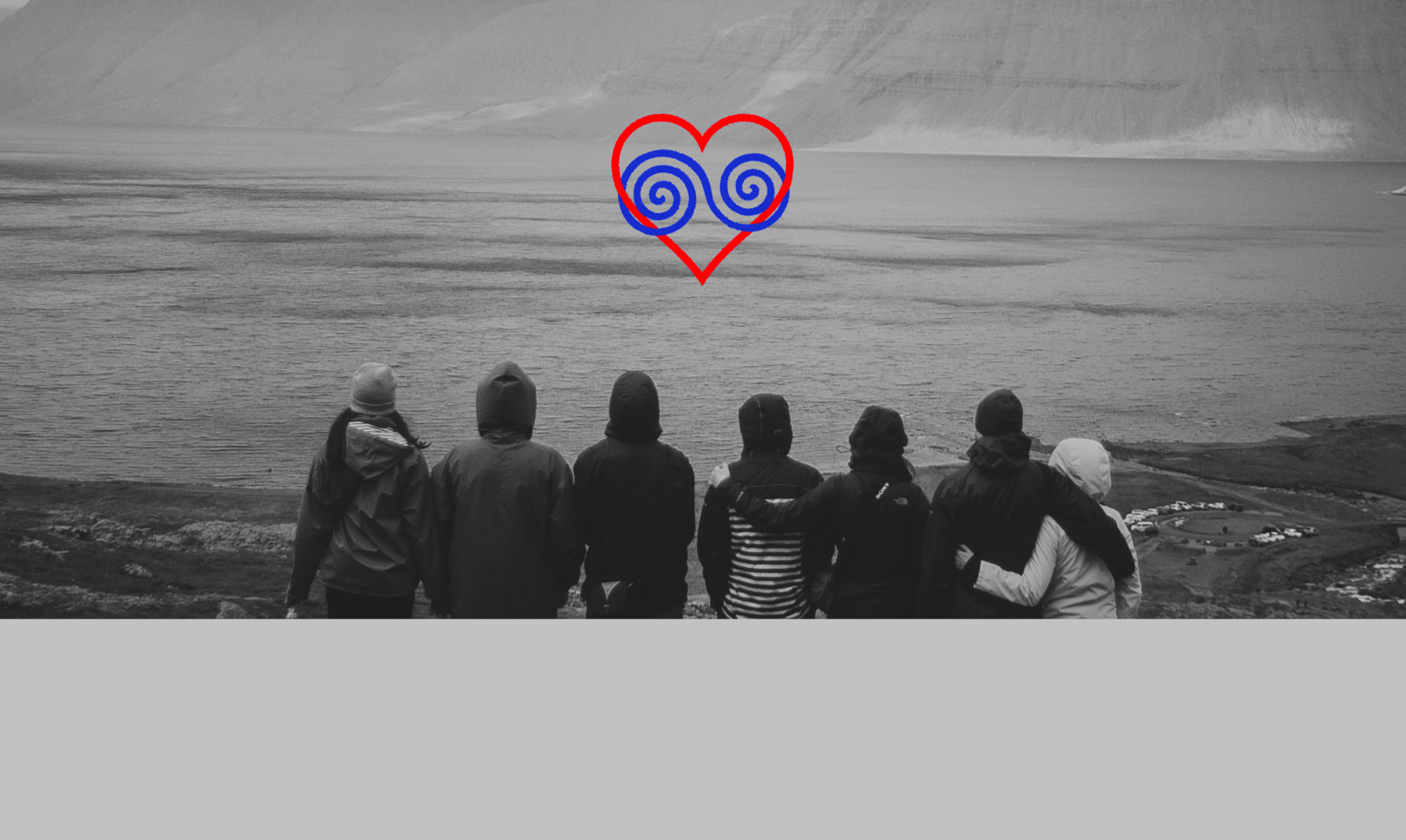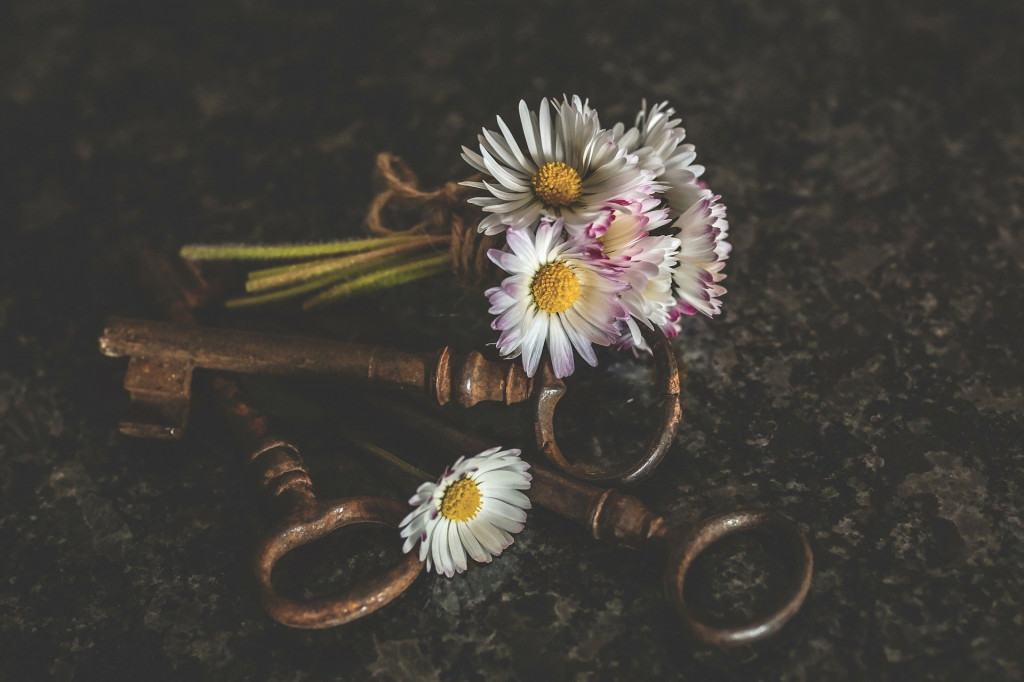The Skeleton
In these days and weeks, in which for present reasons there is an increased risk that we experience our fellow human beings and those things with which they confront us as a plague and a burden, I remembered one story in particular, which I myself read for the first time in about 1997. It was presented to me at that time by the fabulous Clarissa Pinkola Estés in her already legendary book “Women Who Run With The Wolves“. I have modified the following story for this bLog a bit more towards a multiple relationship context, as it is now being told around the campfires of the Oligoamorists.
In any case, the original version, the original book¹ and the even more detailed in-depth psychological interpretation of the myth are warmly recommended to all my readers.
The treasure trove of the Oligoamorists is teeming with heroes and monsters, idols, mythical figures and chimeras. Some of these stories have travelled a long way themselves and come from other cultures, like the following example. The tale, sometimes known elsewhere as “The Skeleton Woman” and sometimes as “The Skeleton Man”, is simply called “The Skeleton” on the island of Oligoamory – and it is told as neutrally as possible, since the essence of the legend could fit any biological sex or social gender….

No one knew any more how this abandoned human being had once ended up at the bottom of the icy sea. In any case, it had been lying on the seabed for some time, and the fish gnawed the flesh down to the bone and ate the coal-black eyes. Henceforth, it floated under the waters, sightless and fleshless, and the carcass was turned over and over by the current.
The fisherfolk in the area stayed away from that particular shore because it was said that the spirit of a skeleton was haunting it.
But one day a young fisher arrived there from a distant region and knew nothing about it. A rod was cast and our fisher waited, unaware that the hook of the rod was about to be caught in the ribs of the skeleton!
A tug could already be felt and our fisher thought with joy: “Oh, what luck! Now I have a great fish on the hook that I can feed on for a long time. Now I no longer have to go hunting.”
But the skeleton, underwater, became more and more entangled in the fishing line of the unsuspecting fisher. Our fisher almost fell into the sea, but then the skeleton was lifted out of the sea with all possible strength. But “Ewww!” and “Yuck!” our fisher exclaimed at the sight of what was entangled in the line, rattling, covered with shells and creatures. The creature was quickly given a blow with the fishing rod, then our fisher fled away from the shore as fast as he could.
But the skeleton continued to be attached to the fishing line, and since our fisher did not want to let go of the precious rod, the skeleton followed wherever the path was going: Over ridges and through hollows, the wriggling skeleton thus remained in pursuit until nightfall. But finally our fisher arrived at the homely hut.
Rushing through the entrance in a hurry, panting, and sinking down, trembling with fright, on the shared bed of the already sleeping companion was almost one.
Inside the hut there was complete darkness, so one can imagine what the two inhabitants felt when, after a while, they lit an oil lamp and not far from them, in a corner of the hut, lay a pile of bones that was in complete disarray: One of the skeleton’s knees was stuck in the ribs, the other leg was twisted around the shoulder – and everything was entangled in the long fishing line. Our fishers companion was at first horrified and then angry at what had come into the house as a kind of strange attachment. And outside it had become even colder and the wind was already shaking the rafters of the hut.
What exactly caused the two residents to unravel the bones and carefully put everything in the right place, no one later really knew. Perhaps it was the threat of loneliness outside – but perhaps it was also the warm light of the shared hearth which made the skull of the skeleton not look quite so ghastly any more. In any case, both suddenly felt sympathy for the skeleton.
“There, there,” they murmured softly and spent half the night carefully untangling all the bones of the skeleton, putting them in order and finally even dressing it in warm clothes so that it would no longer be cold. Afterwards they exhaustedly fell asleep and only a few tears ran down their faces from the fright they had overcome.
But the skeleton now crawled to their side, approached their cheeks with its mouth and carefully drank these tears. Then the skeleton drummed on gently the hearts of the sleepers and began to sing softly: “Oh flesh, flesh, flesh…”, and “Oh skin, skin, skin…”. And the longer it drummed, the more flesh and skin settled on its bones. The being sang for everything a body needed, for thick hair, clear eyes, a good nose, fine ears, dexterous hands, strong hips and an agile body.
And when it had finished, it sang away the clothes of its bedfellows and crawled under the covers with them. It nestled close to both of them, skin to living skin. So they all awoke, tightly embraced, clinging to each other.
It is said that from that day onwards, these new companions never had to suffer from any lack or deprivation because they were no longer afraid of anything, and many of our people still believe it to this day.
The natives of the island of Oligoamory adore this somewhat spooky story because it has everything a true love story needs: The search for a “nurturing treasure” to end the perpetual “hunting around”, the discovery of the “treasure”, which one actually often fails to appreciate at first due to its “outwardness”, a subsequent phase of flight and rejection, finally an “evolvement” and the courage to trust and to relax, resulting in the integration of fears and desires into a sustainable relationship.
If one is willing to commit oneself to the story, as the imaginative natives do, then it seems to be created particularly for a non-monogamous context, which confronts all those involved much more likely with the possibility of emerging new relationships than the good “Old World of Monogamy” usually does. Mrs Estés writes about these “emergence”:
»The first phase of love is described in dozens of tales from all over the world. And in this story, too, the fisher catches “more” than was hoped for. “Oh, that’s one big fish!”, the fisher hinks full of anticipation, not suspecting that in the next moment a “prey” will come to light (and “water” psychologically almost always stands for our subconscious), which at first overburdens one’s own powers. […] Inexperienced fisher do not yet know what they are really looking for, starving ones cast their line to fill an inner void; the mentally wounded fish for consolation for earlier painful losses.
The pleasure-seeking self of most love-fishers is, on closer inspection, often not even interested in love, but in entertaining diversion. Then the ego² says things like: “I just wanted to have some fun with XY. Why am I suddenly confronted with these entanglements and fears? I don’t want to have anything to do with that!” […] At the beginning hardly anyone of us is ready to work for a deeply fulfilling love. We would prefer it if the once attracted “treasure” would not make any further demands. Of course, we know that in this way we can never develop ourselves and thus never become a “treasure” for someone else.«
After this shaky start, the story describes that even potential partners do not react with enthusiasm or even immediate “compersion” toward this new “unfamiliar” thing that is brought into the commonly shared “home”. It is much more like in the “Tale of Anday and Tavitih“ : Whether one likes it or not – consciously or unconsciously – the “unsettling” is in any case ” dragged into” that which is already in place. Suddenly it “takes a stand”, a “whole world emerges³”. In the story, the lit oil lamp is a symbol for this realisation, which causes that – which came in as an attachment in the darkness of the subconscious – to ” manifest” itself clearly.
The ” eruption” of a whole new world into an existing relationship immediately confronts all partners involved with the theme of “finiteness” (which is why the image of a skeleton as a newcomer is really appropriate): Both one’s own finiteness and limitations are touched upon (among them weaknesses in one’s self-image such as old wounds and injuries, fear of declining attractiveness, etc.) as well as the finiteness of the relationship – even if it only means that from now on it cannot be the same as it was only a few moments ago…
My version of the narrative therefore also suggests two possible developments at this point: Perhaps the “shared hut” now won’t be able to withstand the storm that is already rising. It is possible that the events are driving the residents apart, that loneliness (or perhaps more gently: aloneness) outside is preferred to enduring “controversies” inside.
But the story wants to give hope by describing the other alternative: For it is obviously not (only) the fear of loneliness that makes those involved stick to each other. There is also the warm light of the oil lamp and the hearth, “which made the skull of the skeleton not look quite so ghastly any more”. And thus the story points to the already existing resources of the existing relationship – in this case light (the will to raise awareness) and warmth (compassion, empathy). And even more: such a hearth also quite literally stands for a reliable material basis that potentially might provide for “More Than Two”.
But in the story, at that moment, it isn’t certain yet whether this “More Than Two” will work at all. Mrs Estés elaborates:
»When things get tangled and scary in a loving relationship, most of us already see the end approaching. […] Because in fact one is never ” fully prepared”, the timing is never convenient.«
In the corresponding chapter of her book, she emphasises that it is at this point where the self-righteous usually make things easiest for themselves by rejecting everything grave and difficult in a crisis and even congratulating themselves on their “freedom from such tribulations/entanglements/attachments”.
As a Jungian psychologist, however, Mrs Estés in her book straightforwardly exposes the “grave”, “difficult” and “unpleasant” as our lack of consistency and perseverance, coupled with a self-image that would contribute to premature condemnation, thereby emphasising what separates rather than what unites (keyword “Reality of Separation“):
»Untangling a skeleton implies infinite patient painstaking work to find out how everything is connected. And in doing so, we encounter the resistance of the ego, especially when it comes to tasks that at first glance are associated with fear.«
Well, in the story, the protagonists find the path to sympathy because they realise “when they look at it by light” that the thing that has come into their house is basically a human being like themselves. And that, strictly speaking, is already the core of sympathy, this realisation: “That one over there” probably feels the same as I do – thus establishing a basis for mutual understanding. The German writer Julius Grosse once wrote: »When sympathy settles in, it is only one more step to love.« In fact, this is also true in the story, because another “ingredient” must be added to sympathy – before love can finally unfold.
To that effect, the aphorist Marie von Ebner-Eschenbach phrased already in 1880: »Trust is the most beautiful form of courage and is established through consistency«.
It is precisely this establishment of trust among the participants that is at stake in the last part of the story, after the “initial mess” has been sorted out. As a symbol for this trust, the story employs sleep, in which we all become completely unprotected and vulnerable every night. What almost seems like a magical act in the narration is in reality exactly the “leap of faith” for which the above-mentioned courage is needed, because it involves nothing more than the greatest possible self-revelation for all involved partners – in the words of Mrs Estés:
»The tears draw the skeleton closer to the couple [the existing relationship]. Without these tears, it would have remained piecemeal – and thus only a mere object of desire.
Those tears stand for mourning and (self-)healing: We have all hoped at one time or another that one day someone would come to heal all our wounds, to lift every burden from us. It can take decades before we find out that no one is doing this work for us, especially if our own wounds are projected outwards to avoid dealing with them internally.«
So what matters now is whether the transition from a phase of unacknowledged fears (albeit already accompanied by sympathy) to the greatest possible openness and honesty will succeed. Because now that trust is at stake, it will become apparent what the other participants in the relationship – or in the story: the drums of their hearts – are made of: Will the relationship take on “flesh” – meaning substance – as it apparently succeeds in the story.
As the author of this bLog, I appreciate Mrs Estés’ narration because in it she combines the psychology of love with the motifs of romance and dynamics that are important to Oligoamory:
»’The Skeleton’ demonstrates us that community and fellowship, across all increases and decreases, all ends and beginnings, produces what we perceive as true love and true devotion. […] In the process of love, countless deaths are died, many seemingly final endings are reached, and yet the essence of the relationship continues to exist as long as those involved understand that the eternal alternation between growth and decay is the true constant in any relationship. Those who unconsciously assume that ending points can impossibly already hold the next starting point are too fatalistic to endure even a single so-called ending within a relationship. Then the horror becomes too overwhelming to fully commit to one’s loved ones, because such devotion ultimately means nothing else than willingly surrendering oneself to the cycles of ever new endings and beginnings.«
In essence:
»The story describes what fears (=death energy) demand from a relationship: They demand that tears, real feelings, that heart and skin must be given. They demand that all participants must be able to merge with them and endure the fact that their connection thereby involves far more than just “being nice to each other”. They demand that love should be based on a shared will to learn and a willingness to confront old adversities. […]
Restless lies (deathly) fear beneath the surface of every relationship, until it has managed to take refuge in the bed [i.e. in the innermost and most intimate place, so to speak] and there is no escape any more. If then tears of understanding sympathy are shed, those involved are rewarded a thousandfold […] and all live on, yes, in happiness and peace with each other, in each other, through each other.«
¹ “Women Who Run With the Wolves: Myths and Stories of the Wild Woman Archetype“ (originally 1992), revised and expanded edition 2017; the author Clarissa Pinkola Estés Ph.D. (*1945) is the daughter of Mexican parents , holds a doctorate in multicultural studies and clinical psychology, is an active Jungian psychoanalyst, researcher of narratology and a recipient of the Medal of Honour for Social Justice in the USA.
² As a Jungian psychologist, Ms Estés uses the term “ego“ for our self-designed, rather static self-image, which we construct as an assessment about ourselves. Thus, our mental “ego” tends to be oriented towards the “familiar/conventional” and is increasingly sceptical towards re-evaluation and expansion of experience.
³ Refers to the quote from the author Anaïs Nin I used in Entry 6 »that each new person represents a world in us, a world not born until they arrive, and it is only by this meeting that a new world is born.«
And thanks to Ekaterina Kuznetsova on Unsplash for the great photo!










